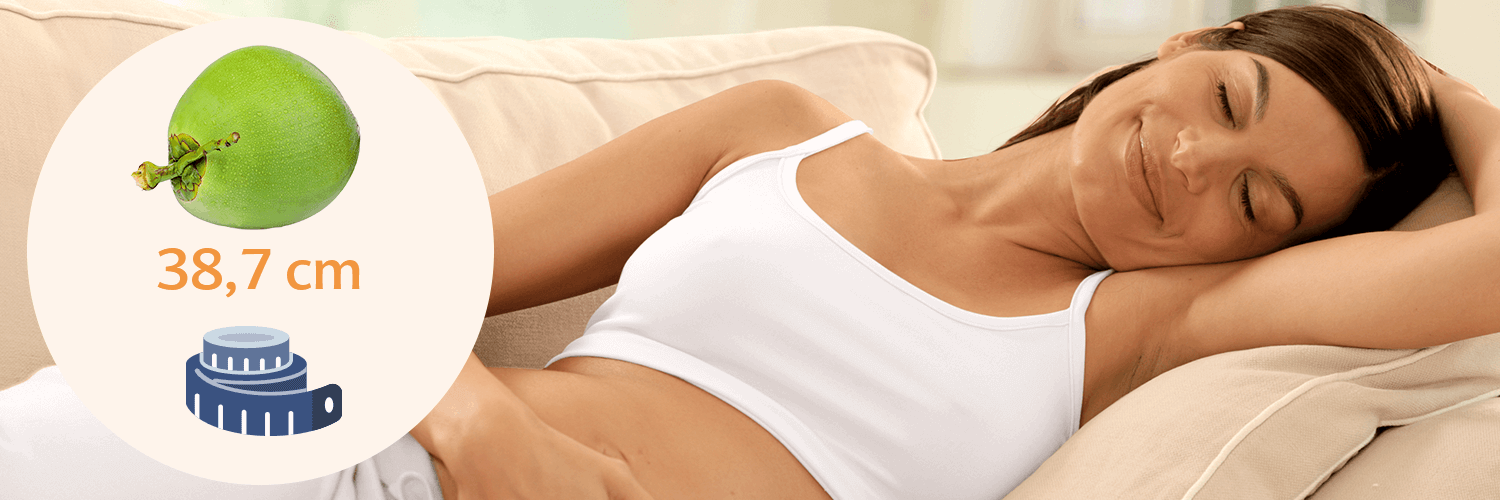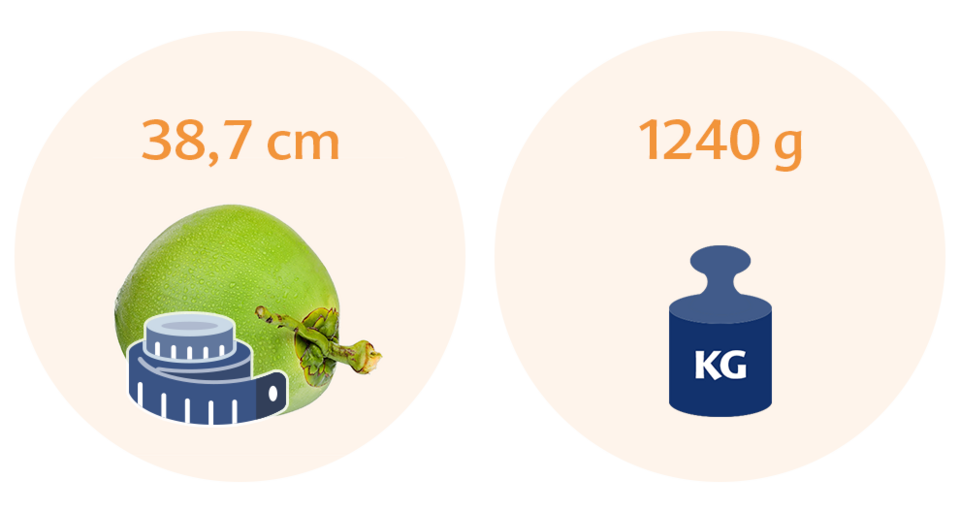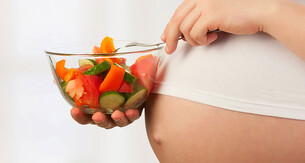Your baby is 38.7 cm in size, about as big as a coconut. They weigh around 1240 grams, so they’ve put on quite a bit of weight – rather than weighing the same as one bag of flour, they’re quickly heading towards weighing as much as two of them. The more your baby weighs, the easier it will be if they are born premature.
Pregnancy weeks:
Week 29 of pregnancy: Your baby builds up their fat cells and puts on weight

Size of your baby in week 29
Your baby’s development
What it’s like for the mum-to-be in week 29
Top tips
Questions you may want to ask your doctor or midwife
In week 29, you’re now in the eighth month of your pregnancy and the third and last trimester. During this month, your baby will grow in all sorts of ways and put on a lot of weight. It’s also time to plan ahead so that your home is a safe space for your baby.
Size of your baby in week 29

Your baby’s development
Your baby looks very similar to how they’ll look when they’re born: their proportions and features have developed quickly in recent weeks and won’t change too much between now and the birth. The focus now is on their organs, which are becoming increasingly complex, and on developing their functions, and on putting on weight as they get closer to the weight of a full-term newborn.
Weight gain
In week 29, your baby now has what they need in place to put on weight, as their fat cells have formed and can store fat reserves. This means they steadily put on “padding”, which they’ll need after the birth as you won’t initially be producing any mature breast milk. In the immediate period after the birth, in fact, your baby will lose a bit of weight – it’s not until day three of life outside the womb that they can consume the calories and fats in your breast milk and start putting on weight again.
If you’re expecting twins, that doesn’t necessarily mean double the weight: your two babies will have different weights at birth and won’t be the same size. Whether there are two babies in your womb or just one, however, all babies’ brains develop fast in week 29 and they gradually become able to regulate their body temperature and heart rhythm, so that they can survive when they’re “on their own” outside the womb.
Immune system development
A key development this month is their immune system. More and more antibodies are being transferred from your body to theirs via the placenta, which build up their immune system and train it to do its job. Your baby will need their immune system to survive outside the protective environment of your womb, as they’ll come into contact with all kinds of bacteria. So until they’re around a year old, it’s crucial that they’re shielded from serious illnesses: for instance, if grandma has had bronchitis or the flu, it’s best to postpone visiting her until she’s fully recovered.
Your baby’s lanugo hair has thickened and now covers almost their entire body, although they may also have the hair with which they’re born by this stage. This varies from baby to baby – some will have lots of hair when they’re born, while others will have very little. It’s a question of genetics and isn’t influenced by any other factors.
What it’s like for the mum-to-be in week 29
As your baby grows, so does your bump. They continue to practise their movements, which are getting more and more noticeable as your baby gets bigger and stronger every day and has less and less space in your womb. As long as they can still turn and move around, that’s what they’ll do – they’re already an active little person.
The familiar symptoms of back pain, problems caused by your baby’s forceful movements, and swollen, sore legs can also occur in week 29. Symptoms you experienced in the early weeks of pregnancy have been replaced by symptoms affecting your musculoskeletal system, though you may still feel slightly nauseous or get heartburn in the final few weeks before the birth, as your womb is pressing against your costal arch and squeezing some of your other organs.
Common signs and symptoms
Increasing back pain
Many pregnant women suffer from back pain. This is completely normal, as your gait has changed and your back has a heavier load to carry. Your baby’s weight may also affect your nervous system, which can lead to other problems: sudden muscle cramps in your legs, bottom, hips and upper abdomen are all common. You’ll notice this in particular if your stress levels are high, as stress is a kind of “magnesium devourer” – so if things are becoming stressful for you, make sure you get sufficient magnesium from the food you eat.
Find out more about magnesium and why it’s so important.
Preparing for life with your child
It’ll probably be difficult to think of much else other than your baby, and now’s the time to plan ahead for where they’re going to sleep, and for painting/redecorating/renovating if necessary. Your baby can sleep in your bedroom at first, of course, and it’s a good idea to get a cot to go next to your bed (this will also help when it comes to breastfeeding at night).
Top tips
- To get through a long, demanding day, try to eat several small meals. This will keep your energy levels high and broadly consistent, rather than experiencing ups and downs.
- To ensure you get enough magnesium, eat food such as nuts, wholemeal wheat products, pulses, spinach and cabbage.
- Make sure you get enough fluids: try to drink one glass an hour!
- Use your free time for walks in the fresh air, which will ease tension and back pain.
- Once you’ve narrowed down the choices for where you want to give birth, take the opportunity to visit the delivery rooms if you can.
Questions you may want to ask your doctor or midwife
Help with back problems
If you suffer from recurring back problems, there are alternative options which can produce immediate results in addition to conventional exercise therapies.
One highly effective way to reduce or eliminate pain is acupressure. This is similar to acupuncture and involves putting pressure on certain points in your body to relieve pain through the meridians, our body’s energy channels.
Another useful option is elastic, self-adhesive sports strapping called Meditape, which you can apply to the painful areas to continuously massage your muscles. It comes in a range of colours, and it can either stimulate or relax your muscles.
Ask your doctor to recommend a sports therapist who frequently uses these pain-relieving techniques in their practice. Your midwife can also give you more information, and she may even be trained in these healing treatments herself.
However, there’s no substitute for regular exercise, so take advantage of classes designed for pregnant women at your gym or your midwifery clinic. They’ll keep you flexible and will gradually reduce the symptoms you currently have while preventing others from occurring.
Information about the author:
Juliane Jacke-Gerlitz is a registered nurse. She has been working in the field of mother and breastfeeding counselling for more than ten years. Currently she is working as a medical writer and psychological consultant. Juliane Jacke-Gerlitz has been married for 22 years, is a mother of eight children and lives with her family in Halle.




